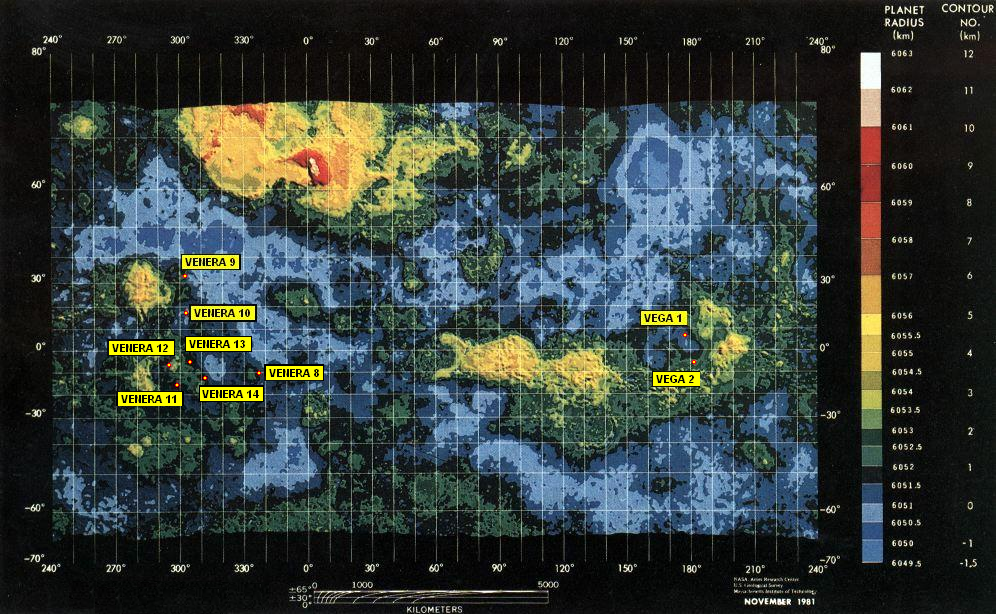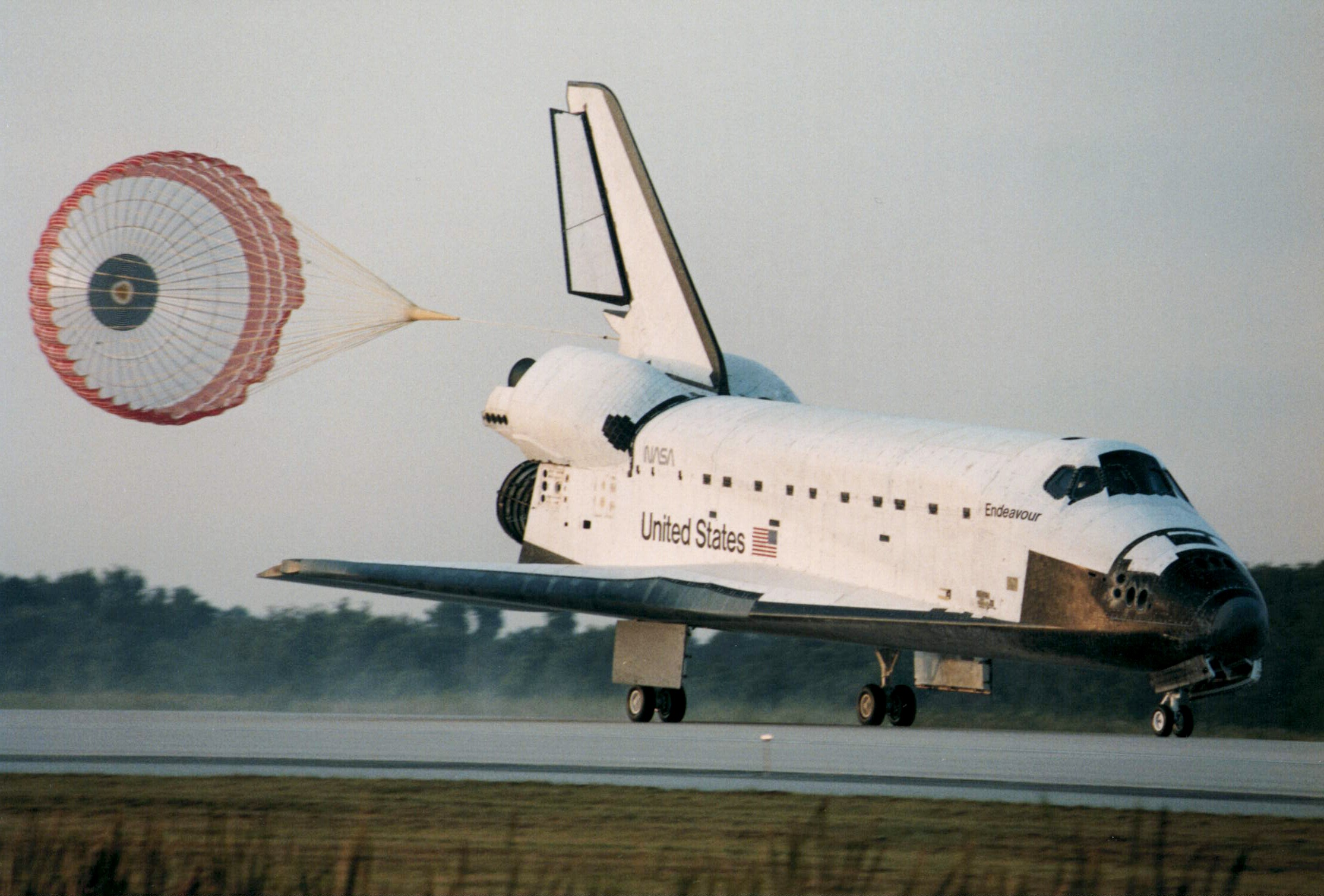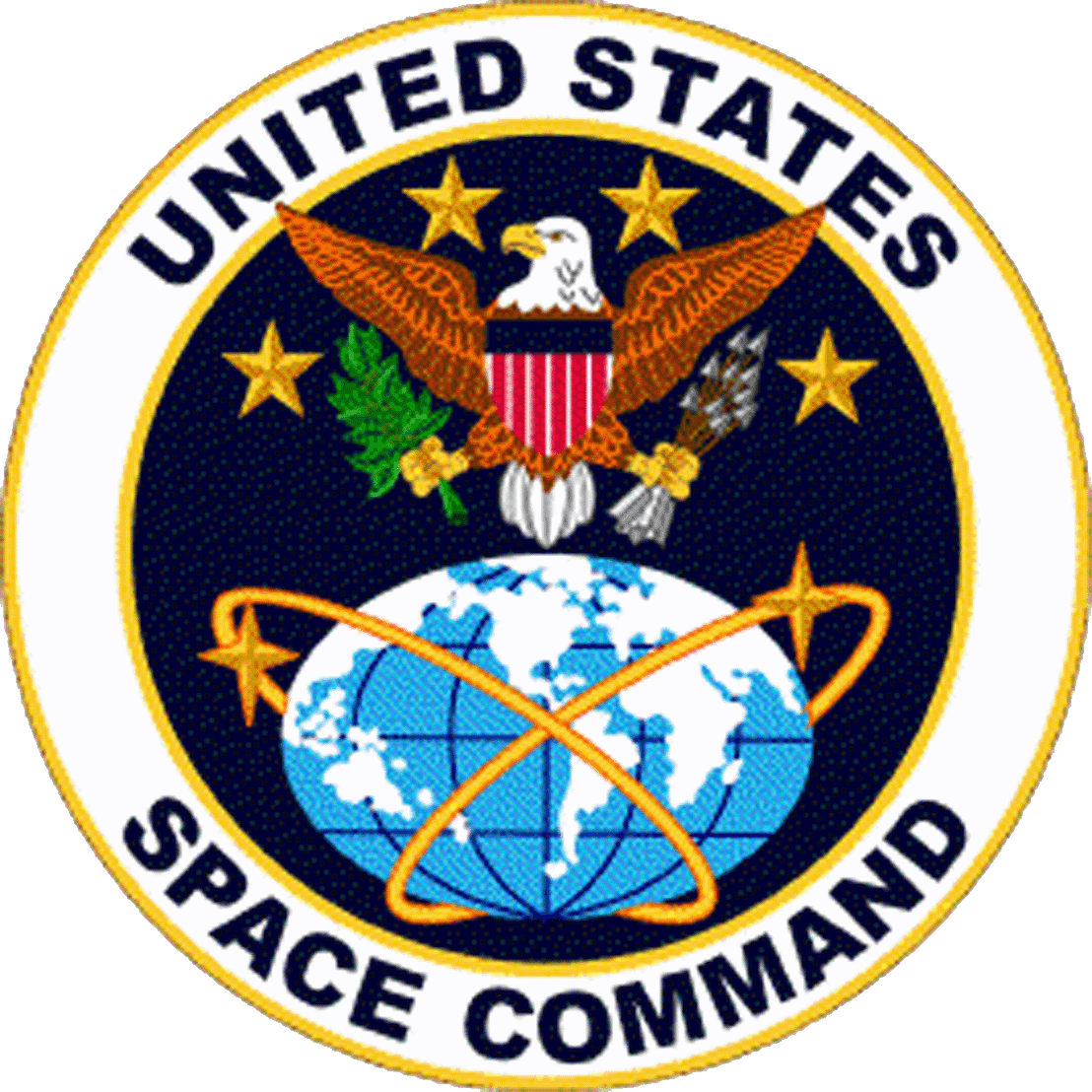|
Luna E-6 No.2
Luna E-6 No.2, also identified as No.1, and sometimes known in the West as Sputnik 25, was a Soviet spacecraft which launched in 1963, but was placed into a useless orbit due to a problem with the upper stage of the rocket that launched it. It was a Luna Ye-6 spacecraft, the first of twelve to be launched. It was intended to be the first spacecraft to perform a soft landing on the Moon, a goal which would eventually be accomplished by the final Ye-6 spacecraft, Luna 9. Luna E-6 No.2 was launched at 08:49 UTC on 4 January 1963, atop a Molniya-L 8K78L carrier rocket, flying from Site 1/5 at the Baikonur Cosmodrome. The lower stages of the rocket performed nominally, delivering the upper stage and payload into low Earth orbit, but a transformer in the upper stage malfunctioned, which resulted in its ullage motors failing to ignite when the stage began its start-up sequence, sixty-six minutes after launch. It remained in low Earth orbit until it decayed on 11 January 1963. It was t ... [...More Info...] [...Related Items...] OR: [Wikipedia] [Google] [Baidu] |
Venera 2MV-2 No
The Venera (, , which means "Venus" in Russian) program was the name given to a series of space probes developed by the Soviet Union between 1961 and 1984 to gather information about the planet Venus. Ten probes successfully landed on the surface of the planet, including the two Vega program and Venera-Halley probes, while thirteen probes successfully entered the Venusian atmosphere. Due to the extreme surface conditions on Venus, the probes could only survive for a short period on the surface, with times ranging from 23 minutes to two hours. The ''Venera'' program established a number of precedents in space exploration, among them being the first human-made devices to enter the atmosphere of another planet (Venera 3 on 1 March 1966), the first to make a soft landing on another planet (Venera 7 on 15 December 1970), the first to return images from another planet's surface (Venera 9 on 8 June 1975), the first to record sounds on another planet (Venera 13 on 30 October 1981) ... [...More Info...] [...Related Items...] OR: [Wikipedia] [Google] [Baidu] |
Soft Landing (rocketry)
A soft landing is any type of aircraft, rocket or spacecraft landing that does not result in significant damage to or destruction of the vehicle or its payload, as opposed to a hard landing. The average vertical speed in a soft landing should be about per second or less. A soft landing can be achieved by * Parachute—often this is into water. * Vertical rocket power using retrorockets, often referred to as VTVL (vertical landing referred to as VTOL, is usually for aircraft landing in a level attitude, rather than rockets) — first achieved on a suborbital trajectory by Bell Rocket Belt and on an orbital trajectory by the Surveyor 1. * Horizontal landing, most aircraft and some spacecraft, such as the Space Shuttle, land this way. * Being caught in midair, as done with Corona spy satellites and followed by some other form of landing Landing is the last part of a flight, where a flying animal, aircraft, or spacecraft returns to the ground. When the flying objec ... [...More Info...] [...Related Items...] OR: [Wikipedia] [Google] [Baidu] |
Luna Programme
The Luna programme (from the Russian word "Luna" meaning "Moon"), occasionally called ''Lunik'' by western media, was a series of robotic spacecraft missions sent to the Moon by the Soviet Union between 1959 and 1976. Fifteen were successful, each designed as either an orbiter or lander, and accomplished many firsts in space exploration. They also performed many experiments, studying the Moon's chemical composition, gravity, temperature, and radiation. Twenty-four spacecraft were formally given the Luna designation, although more were launched. Those that failed to reach orbit were not publicly acknowledged at the time, and not assigned a Luna number. Those that failed in low Earth orbit were usually given Cosmos designations. The estimated cost of the Luna programme in 1964 was US$6–10 billion. Mission types The name ''Luna'' was used to designate a variety of spacecraft designs, to achieve several types of missions: Impactors Impactor spacecraft are designed to h ... [...More Info...] [...Related Items...] OR: [Wikipedia] [Google] [Baidu] |
Spacecraft Launched In 1963
A spacecraft is a vehicle or machine designed to fly in outer space. A type of artificial satellite, spacecraft are used for a variety of purposes, including communications, Earth observation, meteorology, navigation, space colonization, planetary exploration, and transportation of humans and cargo. All spacecraft except single-stage-to-orbit vehicles cannot get into space on their own, and require a launch vehicle (carrier rocket). On a sub-orbital spaceflight, a space vehicle enters space and then returns to the surface without having gained sufficient energy or velocity to make a full Earth orbit. For orbital spaceflights, spacecraft enter closed orbits around the Earth or around other celestial bodies. Spacecraft used for human spaceflight carry people on board as crew or passengers from start or on orbit (space stations) only, whereas those used for robotic space missions operate either autonomously or telerobotically. Robotic spacecraft used to support scientific res ... [...More Info...] [...Related Items...] OR: [Wikipedia] [Google] [Baidu] |
Satellite Situation Summary
A satellite or artificial satellite is an object intentionally placed into orbit in outer space. Except for passive satellites, most satellites have an electricity generation system for equipment on board, such as solar panels or radioisotope thermoelectric generators (RTGs). Most satellites also have a method of communication to ground stations, called transponders. Many satellites use a standardized bus to save cost and work, the most popular of which is small CubeSats. Similar satellites can work together as a group, forming constellations. Because of the high launch cost to space, satellites are designed to be as lightweight and robust as possible. Most communication satellites are radio relay stations in orbit and carry dozens of transponders, each with a bandwidth of tens of megahertz. Satellites are placed from the surface to orbit by launch vehicles, high enough to avoid orbital decay by the atmosphere. Satellites can then change or maintain the orbit by propulsion, ... [...More Info...] [...Related Items...] OR: [Wikipedia] [Google] [Baidu] |
Naval Space Command
The Naval Space Command (NSC) was a military command of the United States Navy and former component command of United States Space Command. It was headquartered at Dahlgren, Virginia, and began operations on 1 October 1983. Naval Space Command used space capabilities to support naval forces through the operation of reconnaissance and communications satellites, as well as representing the Navy's space interests, both within the Navy and within U.S. Space Command. The command was merged into Naval Network and Space Operations Command, itself part of Naval Network Warfare Command, about July 2002. History In the late 1950s the United States Naval Research Laboratory's Project Vanguard Minitrack system used electronic signals emitted by Sputnik and other satellites to characterize their orbits, serving as one of the first methods of ground-based satellite tracking. This system would become commissioned in 1961 as the Naval Space Surveillance System, and in 1993 the system would be tra ... [...More Info...] [...Related Items...] OR: [Wikipedia] [Google] [Baidu] |
International Designator
The International Designator, also known as COSPAR ID, is an international identifier assigned to artificial objects in space. It consists of the launch year, a three-digit incrementing launch number of that year and up to a three-letter code representing the sequential identifier of a piece in a launch. In TLE format the first two digits of the year and the dash are dropped. For example1990-037Ais the Space Shuttle ''Discovery'' on mission STS-31, which carried the Hubble Space Telescope1990-037B into space. This launch was the 37th known successful launch worldwide in 1990. The designation system has been generally known as the COSPAR system, named for the Committee on Space Research (COSPAR) of the International Council for Science. COSPAR subsumed the first designation system, devised at Harvard University. That system used letters of the Greek alphabet to designate artificial satellites. This was based on the scientific naming convention for natural satellites. For exampl ... [...More Info...] [...Related Items...] OR: [Wikipedia] [Google] [Baidu] |
Ullage Motor
Ullage motors (also known as ullage engines or ullage rockets) are relatively small, independently fueled rocket engines that may be fired prior to main engine ignition, when the vehicle is in a zero-g situation. The resulting acceleration causes liquid in the rocket's main tanks to settle towards the aft end, ensuring uninterrupted flow to the fuel and oxidizer pumps. Description Cryogenic-liquid-fueled rockets keep their propellants in insulated tanks. These tanks are never completely filled to allow for expansion. In micro-gravity conditions the cryogenic liquids are without a free surface existing in a slushy state between solid, liquid, and gas. In this mixed state, ullage gases may be sucked into the engines, which is undesirable, as it displaces useful propellant, reduces efficiency, and may damage the engines. Small rocket engines, called "ullage motors", are sometimes used to settle the propellant prior to the main engine ignition to allow the formation of a temporary fre ... [...More Info...] [...Related Items...] OR: [Wikipedia] [Google] [Baidu] |
Transformer
A transformer is a passive component that transfers electrical energy from one electrical circuit to another circuit, or multiple circuits. A varying current in any coil of the transformer produces a varying magnetic flux in the transformer's core, which induces a varying electromotive force (EMF) across any other coils wound around the same core. Electrical energy can be transferred between separate coils without a metallic (conductive) connection between the two circuits. Faraday's law of induction, discovered in 1831, describes the induced voltage effect in any coil due to a changing magnetic flux encircled by the coil. Transformers are used to change AC voltage levels, such transformers being termed step-up or step-down type to increase or decrease voltage level, respectively. Transformers can also be used to provide galvanic isolation between circuits as well as to couple stages of signal-processing circuits. Since the invention of the first constant-potential transfo ... [...More Info...] [...Related Items...] OR: [Wikipedia] [Google] [Baidu] |
Low Earth Orbit
A low Earth orbit (LEO) is an orbit around Earth with a period of 128 minutes or less (making at least 11.25 orbits per day) and an eccentricity less than 0.25. Most of the artificial objects in outer space are in LEO, with an altitude never more than about one-third of the radius of Earth. The term ''LEO region'' is also used for the area of space below an altitude of (about one-third of Earth's radius). Objects in orbits that pass through this zone, even if they have an apogee further out or are sub-orbital, are carefully tracked since they present a collision risk to the many LEO satellites. All crewed space stations to date have been within LEO. From 1968 to 1972, the Apollo program's lunar missions sent humans beyond LEO. Since the end of the Apollo program, no human spaceflights have been beyond LEO. Defining characteristics A wide variety of sources define LEO in terms of altitude. The altitude of an object in an elliptic orbit can vary significantly along the orbit. ... [...More Info...] [...Related Items...] OR: [Wikipedia] [Google] [Baidu] |
Carrier Rocket
A launch vehicle or carrier rocket is a rocket designed to carry a payload (spacecraft or satellites) from the Earth's surface to outer space. Most launch vehicles operate from a launch pad, launch pads, supported by a missile launch control center, launch control center and systems such as vehicle assembly and fueling. Launch vehicles are engineered with advanced aerodynamics and technologies, which contribute to large operating costs. An orbital spaceflight, orbital launch vehicle must lift its payload at least to the boundary of space, approximately and accelerate it to a horizontal velocity of at least . Suborbital spaceflight, Suborbital vehicles launch their payloads to lower velocity or are launched at elevation angles greater than horizontal. Practical orbital launch vehicles are multistage rockets which use chemical propellants such as Solid-propellant rocket, solid fuel, liquid hydrogen, kerosene, liquid oxygen, or Hypergolic propellants. Launch vehicles are cla ... [...More Info...] [...Related Items...] OR: [Wikipedia] [Google] [Baidu] |
Luna 9
Luna 9 (Луна-9), internal designation Ye-6 No.13, was an uncrewed space mission of the Soviet Union's Luna programme. On 3 February 1966, the Luna 9 spacecraft became the first spacecraft to achieve a survivable landing on a celestial body. Spacecraft The lander had a mass of and consisted of a spheroid ALS capsule measuring . It used a landing bag to survive the impact speed of . It was a hermetically sealed container with radio equipment, a program timing device, heat control systems, scientific apparatus, power sources, and a television system. The spacecraft was developed in the design bureau then known as OKB-1, under Chief Designer Sergei Korolev (who had died before the launch). The first 11 Luna missions were unsuccessful for a variety of reasons. At that time the project was transferred to Lavochkin design bureau since OKB-1 was busy with a human expedition to the Moon. ''Luna 9'' was the twelfth attempt at a soft-landing by the Soviet Union; it was also the fi ... [...More Info...] [...Related Items...] OR: [Wikipedia] [Google] [Baidu] |






_motor.jpg)

